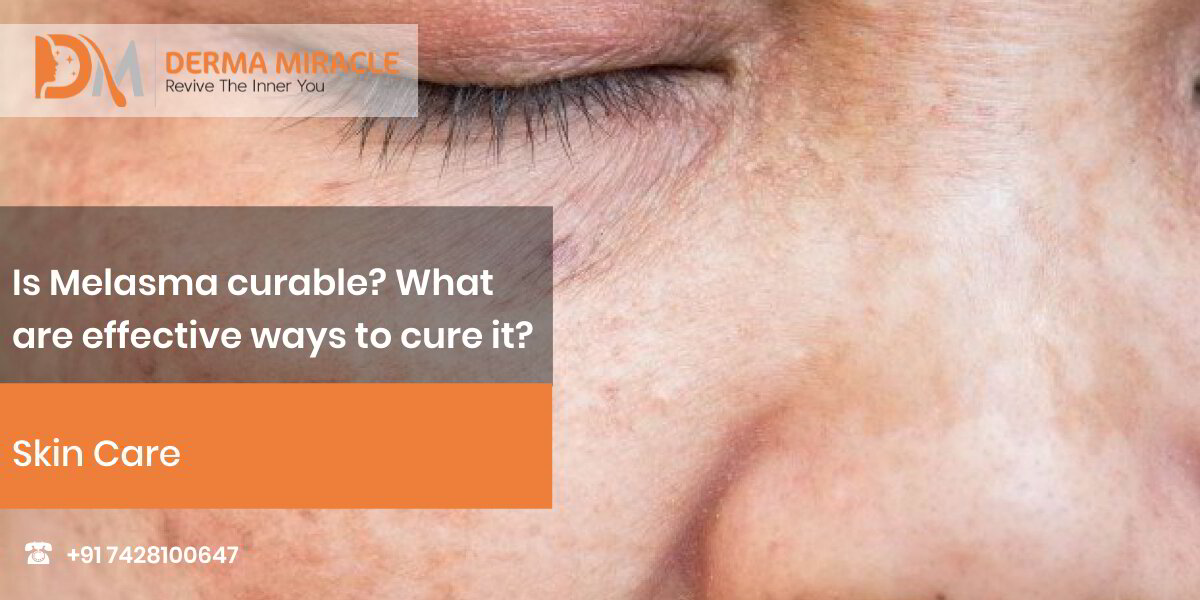People with dark skin of color are more prone to melasma because they have a higher concentration of melanocytes. Melanocyte cells make too much pigment when exposed to UV light, resulting in dark spots on the face and body.

Table Of Content
What is Melasma?
Melasma is a common pigmentation disorder in which brownish patches appear on the skin, mostly on the face.The most common areas for melasma on the face are:
- The forehead
- The bridge of the nose
- The upper lip
- The cheeks
Melasma occurs in other areas of the body, like those exposed to a lot of sunlight. These areas may include:
- The neck
- The forearms
- The shoulders
Types
Melasma is divided into 3 types:
- Epidermal Melasma
- Dermal Melasma
- Mixed Melasma
Epidermal melasma is the most superficial manifestation of hyperpigmentation (melanin) in the upper layer of the skin (epidermis).Dermal melasma, there is an increase in skin pigmentation in the second layer of the skin (dermis).Mixed melasma, there is more skin pigmentation in the dermis as well as epidermis.

Symptoms
The main symptom of melasma is the appearance of discolored spots on the skin. While it does not cause any other physical symptoms, some people are concerned about the appearance of these spots.
The most common area for melasma to appear is the face. Common areas include the cheeks,
forehead, upper lips, and bridge of the nose.
Less commonly, a person may have spots on their arms and neck.
Causes
Doctors do not fully understand why melasma appears. It can be caused by the malfunctioning of the melanocytes in the skin.Because of this people with darker skin tones get melasma because of the presence of more melanocytes as compared to people with lighter skin. Potential triggers for melasma include:
- Sun exposure
- Changes in hormones during pregnancy or while taking birth control pills

Treatment
Treatment for melasma is not always necessary. For others, melasma can last for years or even days. If melasma persists over time, the person may seek treatment to remove or lessen the blemishes.
It’s important to know that not all treatments work for everyone, and melasma may reappear even after treatment that you thought is effective.The treatment options include:
- Hydroquinone
- Corticosteroids and tretinoin
Medical procedures
If topical medications do not work, the doctor may recommend procedures such as:
- Chemical peel
- Microdermabrasion
- Laser treatment
- Dermabrasion
- Light therapy
Conclusion
Melasma is the dark spot on the skin, most often on the face. Although these skin changes are harmless, some people may experience discomfort. For some people, the treatment is effective. Melasma due to hormonal changes can also disappear over time as hormone levels return to normal.
CONSULT DEMAMIRACLE
Is Melasma curable? What are effective ways to cure it?
ACT BEFORE IT’S TOO LATE

FREE CONSULTATION AVAILABLE
Contact Us
